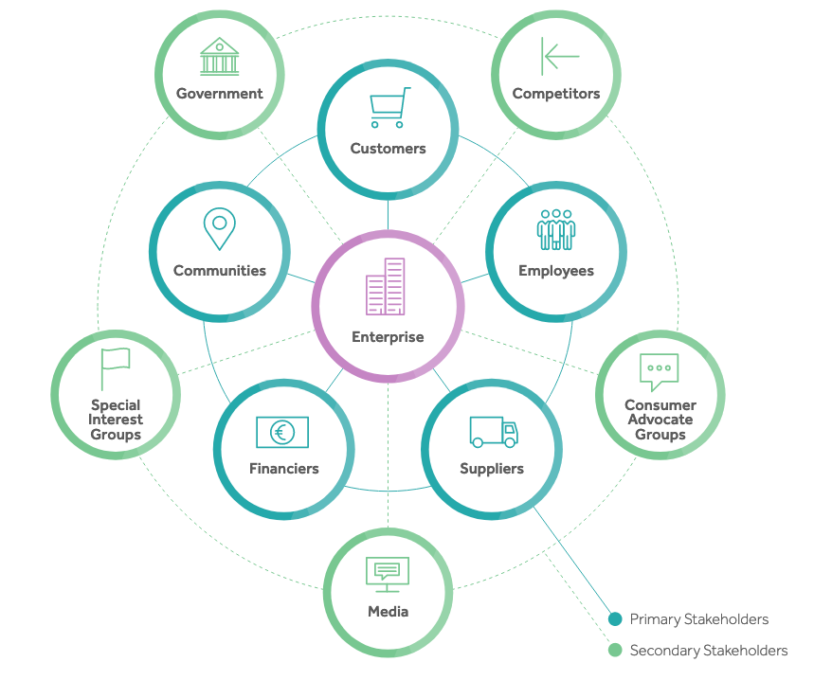
Companies by their nature have many stakeholders: owners, employees, customers, suppliers, governments, industry regulating or standards bodies, banks, investors, lenders, insurers, unions, local communities, environmental and social justice groups and media. Essentially any group or individual who can impact or affect or is impacted or affected by the enterprise.
Primary and Secondary Stakeholders
Stakeholders can be considered as primary or secondary stakeholders. A primary stakeholder is essential or is part of a group that is essential for the company’s survival. A secondary stakeholder affects or impacts or is affected or impacted by the company but is not essential for its survival.

Stakeholder Categories – Primary and Secondary Stakeholders
Examples of primary stakeholders include investors, employees, suppliers, customers and local communities which provide the infrastructure and boundaries within which the company must operate. Secondary stakeholders include the media, NGOs and environmental groups, etc. It is important to note that even though secondary stakeholders are not necessarily key to a company’s survival they can still have a massive influence on how the company operates, its business model and reputation and can be instrumental in giving or taking away a company’s social license to operate.
When it comes to sustainability, an organisation must identify and consider ALL stakeholders as part of its materiality assessment process so that it can ensure it addresses each and every sustainability-based concern stakeholders may have in relation to its business.
If a company fails to identify a stakeholder group or doesn’t effectively engage with them, they risk major negative impacts and missed opportunities.
By conducting a thorough stakeholder mapping exercise, companies can identify their unique set of stakeholders, assess their needs and requirements and ultimately determine how best to engage and deliver value.
You can learn how to identify and engage stakeholders to assess their needs and wants in RBESG’s sustainability transformation system.






